DISCLAIMER – This post it not written by a professional electrician. It’s written by a retired bloke in England who meddles with old Singers, and what follows is nothing more than personal opinion based on experience and, hopefully, a smattering of common sense.
As we said in part one, if any of the wiring looks dodgy it probably is, and it therefore needs attending to. The question is, though, who’s going to sort it out for you? If you trot off to your local sewing machine shop, you’re unlikely to find them keen to re-wire your ancient machine at a sensible price. If you ask that nice young chap who came and put a couple of new sockets in your kitchen last year and fixed your outside light while he was at it, he’ll probably say he’d love to help but it’s not really his territory. And after that you may well be struggling for ideas, so the question’s bound to arise sooner or later – is it a DIY job?
I can’t really answer that, but I can give you some idea of what’s involved in re-wiring a typical vintage Singer so you can decide for yourself …

I very much wanted to show you some of the real horrors we come across, but because they tend to get binned straight away, I can’t find one to photograph! Instead, here’s a picture of the sort of thing you find under the later type Singer motors, in this case one off a 1940’s 201K, and that wiring’s definitely in a lot better condition than most you’ll see on a vintage machine. The mains lead going off to the left goes to the Singerlight, and the black, yellow and red wires disappearing into the metalwork on the right go to the back of the motor socket.
On an earlier machine, you’re likely to find that instead of screw terminals, these connections under the motor are made by three Scruits, and if you’ve never met a Scruit before, you’re in for a treat when you do. There’s a period ad for Scruits here. Having got a feel for that, let’s move on now to the motor plug and socket connections …

We’re looking here at the mating face of the plug, and on machines with the usual foot-pedal speed control, the mains lead connects across 1 and 3, and the foot pedal connects across 1 and 2. On knee-lever machines, it’s still mains lead across 1 and 3, and the fact that in this case there’s no connection to the centre contact does not mean you could use it to earth the machine. You couldn’t.

Now we’re looking at the socket, with its three brass pins pointing straight at us. Yes dear, I know they look like screws with washers under them, but they’re not – they’re sticky-outy pins. Pins 2 and 3 are the motor connections, and if a Singerlight is fitted, that connects across 1 and 3.
Now you know what those connections are, have another squint at that top picture. Is it immediately obvious to you which of those three leads going off to the right goes to which pin of the motor socket? If not, I’d suggest that perhaps you might think twice about rewiring an old sewing machine – particularly if you haven’t got a multimeter.
Whatever, if you do feel confident about tackling a re-wire, be aware that on a normal foot-pedal machine, the worst bits are replacing the two wires from the motor stator (for which you need a good soldering iron, solder and some heatshrink sleeving) and re-wiring the motor plug (for which you mainly need patience and a sense of humour). Incidentally, the later type of plug with a cable entry on each side of it is a doddle to do compared to the usual “two mains leads coming out of one big hole” version. Talking of which …
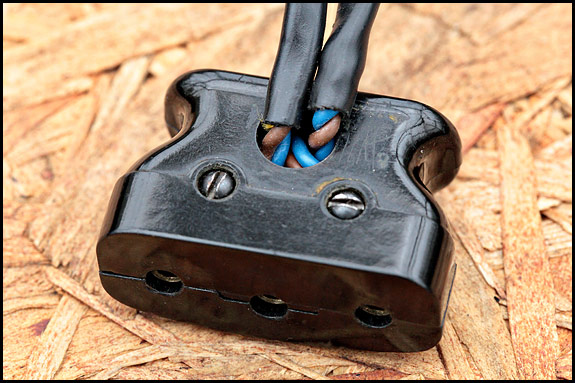
If your motor plug looks something like that, you will obviously want to re-wire it. And when you take it apart, you will wonder what happened to whatever provision there was for anchoring the leads. The answer is that nothing happened, because there wasn’t any provision for anchoring the leads. It’s entirely up to you what you do about that. You’re also on your own when it comes to deciding how to make two mains leads coming out of one round hole look neat when you don’t have a suitable cable entry sleeve, but it’s all good fun. Just don’t lose the very small nuts off those screws …
Another point to note is you’ll find that most motors will still have the suppressor fitted (which may be a three-wire unit screwed onto the bottom of the motor or just a capacitor across the back of the socket). Obviously you can scrap that unless the machine’s likely to be used next door to somebody who still listens to Radio Four on the Long Wave. If you’re not sure if they do, take the suppressor off and run the motor under load while The Archers is on. You’ll find out soon enough.
There’s one final point which is actually more routine maintenance than electrical safety, but we don’t care. You see the pins pointing at you in that snap of the machine socket? Well, over time, the contant plugging-in and unplugging of the plug tends to close up the slot down the end of those pins until you get to the point where you have to keep thumping the plug to keep sewing. The cure is to do what everybody did as a matter of course all the time when most mains plug pins were slotted like that – take a small screwdriver, insert the blade into the slot, and gently push it in a bit so as to widen the gap slightly. Repeat for all three pins, check the plug now plugs in firmly, and that’s it – job done!










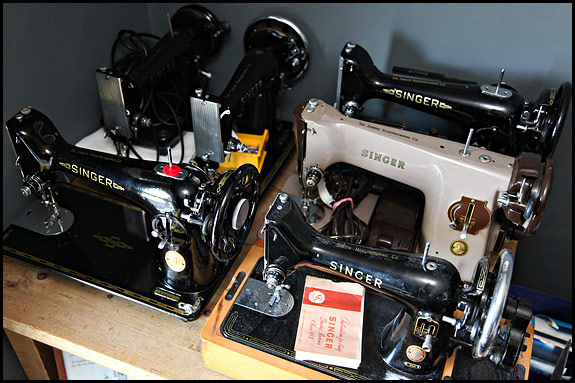
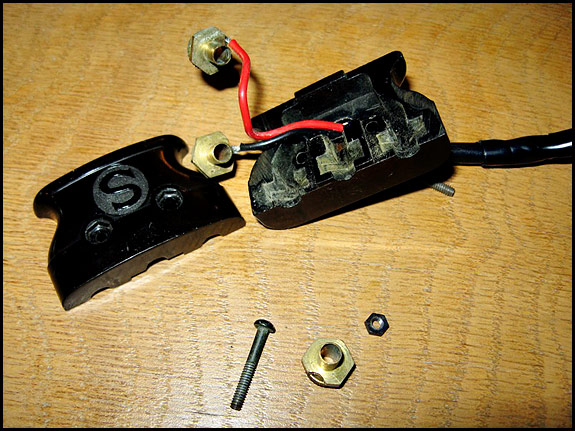
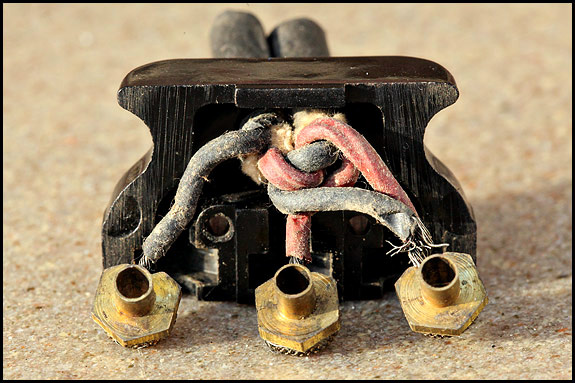
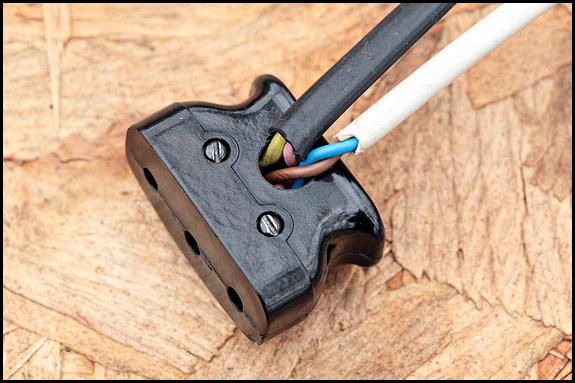

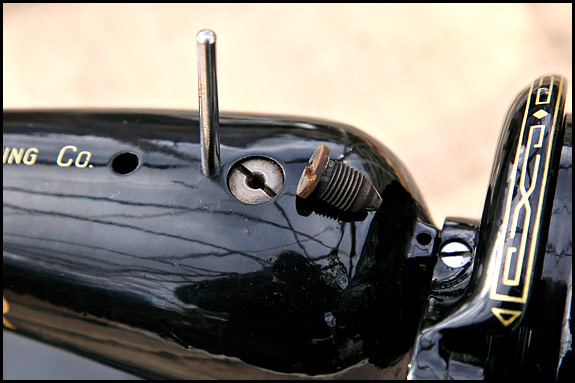



You must be logged in to post a comment.